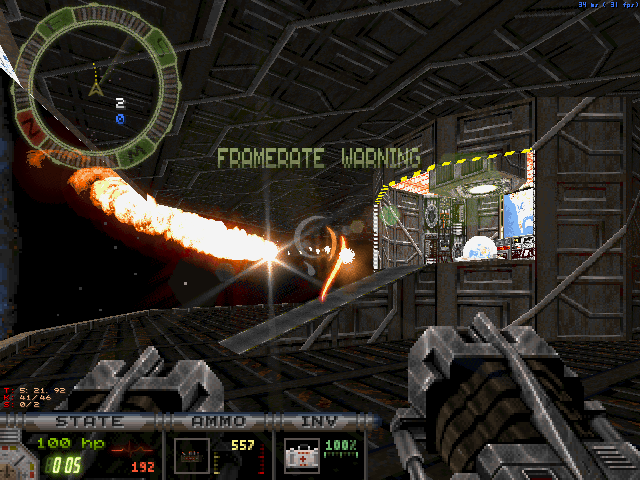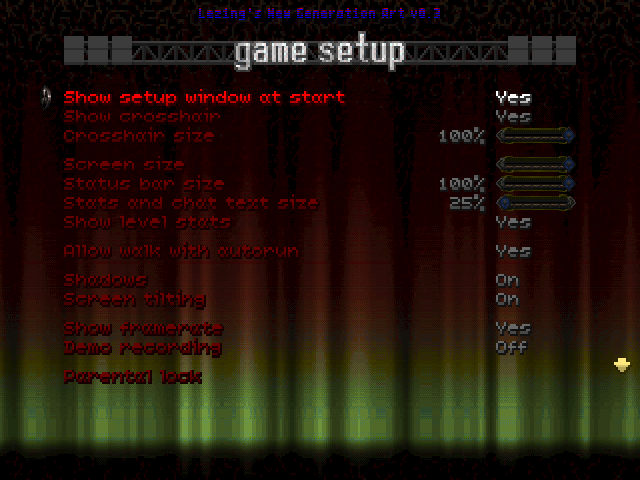Recently some huge progress was made for this project, so it's pretty close to a new release, although there will not be any new levels or items. Actually the whole TC could have been finished within a year if I could work on it every day. But it's not the case.
As you might remember, this mod employs another kind of transparency, which doesn't darken the background pixels, simply adding colors together. Such additive blending is indispensable for a number of effects, such as realistic lens flares and HDR rendering. However, certain things like enemy shadows, decals and smoke effects require darkening of the background, and thus can't be reproduced by pure addition. Still there are ways to extend the capabilities of my palette system.
Earlier I had developed an ugly hack forcing the transparent purple color (usually not displayed in sprites) to be selected via a lookup palette and perform color remapping in a strange way to simulate multiplicative masking, but I couldn't get rid of severe color distortion (that technique could reproduce only up to 90 colors out of 255). So... now the same transparent color simply darkens the image by one or two shades (reverse and direct translucency respectively). When several darkening sprites are combined together, deeper shades can be achieved. I've redone some lookup palettes to be used within multi-layer sprites, so now there's neither more nor less than the support for alpha channels stored as separate tiles.
Here's the HRP shrinker spark I've adapted to LNGA palette for testing purposes (otherwise the mod will not contain any HRP assets) and placed into the Bank Roll level (E3L2). The left part features the green 'additive' and the black 'multiplicative' layers separately. The right part is the combination of both. The second picture shows what happens, when the mask comes after the main sprite (the "rear view").


This way is still slow and inconvenient, but performs with nearly perfect quality. The only limitation is no support for colored masks, but that doesn't really matter, since alpha channels are grayscale as a rule. Also the high dynamic range can't be handled by this technique (in cases when background pixels are clamped to white). Otherwise, this is a step forward in terms of game visuals, making possible sprites with smooth edges and other things requiring semi-transparent pixels. As for texturing methods in general, there are already reflection maps, displacement maps, some kind of lightmaps, mip-maps for some tiles, alpha channels, so perhaps only specular maps and bump maps are yet to be simulated in LNGA. Also I've got an idea for a quick-and-dirty realization of precalculated parallax occlusion mapping.
So this is how I've reworked the enemy shadows to meet the new paradigm. Actually such shadows can be made ubiquitous since they produce minimal artifacts. The second shot demonstrates that they are shown correctly even on slanted surfaces by means of a 2D approximation. Also note that all items on the level are now shown on the radar as dots (possibly, the target scanner gadget should work this way).


 CraigFatman, on 28 March 2012 - 09:26 PM, said:
CraigFatman, on 28 March 2012 - 09:26 PM, said:



 Help
Help
 Duke4.net
Duke4.net DNF #1
DNF #1 Duke 3D #1
Duke 3D #1

























